When planning a hedge, fence line, or privacy screen, you may be tempted by fast-growing plants. Many of these choices look attractive and fill space quickly, but they can create long-term problems in your yard.
Invasive plants spread aggressively, outcompeting native species and reducing biodiversity. Some also alter soil chemistry or damage structures with their roots and vines.
Once established, they are notoriously difficult to remove. Before planting, take a closer look at these 12 invasive species so you can make an informed decision.
#1 Japanese Barberry
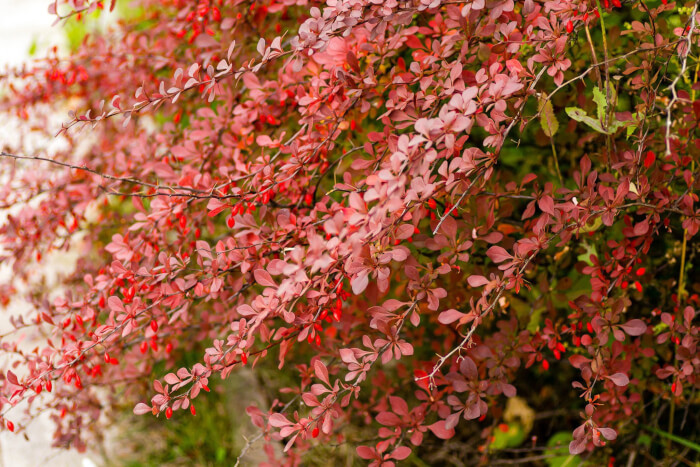
Japanese barberry is a small deciduous shrub often chosen for hedges due to its thorny branches and colorful foliage. The leaves can range from deep purple to golden yellow, depending on the cultivar.
It tolerates poor soils and shady conditions, which is why it spreads so easily. Birds eat its berries and disperse the seeds far beyond where you plant them.
Once naturalized, it creates dense thickets that outcompete native shrubs. It also increases tick populations, making it a health concern in some regions.
#2 Japanese Honeysuckle
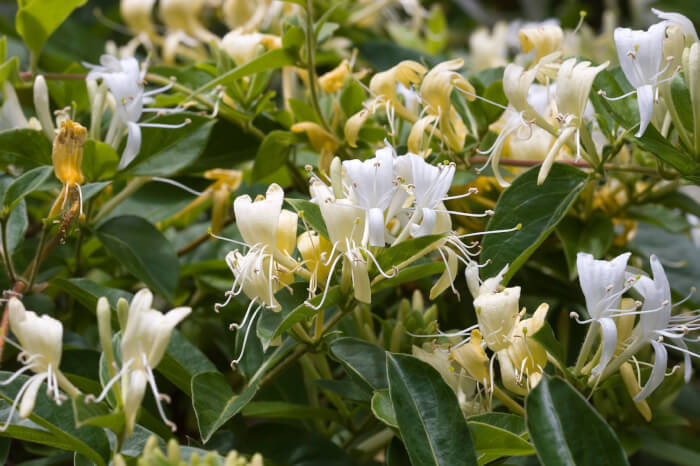
This fragrant vine is admired for its sweet-smelling white and yellow tubular blooms. The problem is that it grows aggressively along the ground, forming dense mats that block light from native plants.
Once it finds a fence or tree, it twines upward and smothers everything in its path. While it attracts pollinators, its rapid spread overwhelms ecosystems.
Removing mature plants can take years of cutting and pulling. It’s best avoided unless you’re ready for constant control.
#3 English Ivy
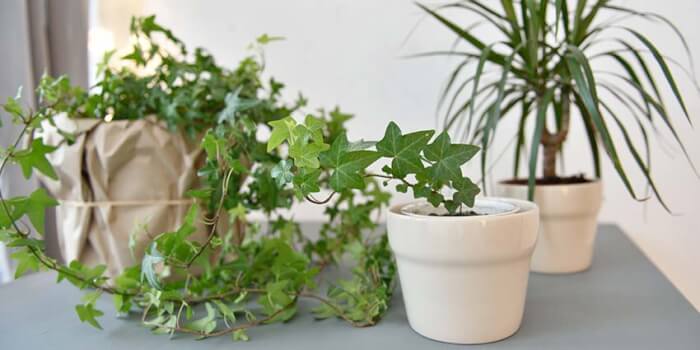
English ivy is a classic choice for walls, fences, and shady groundcovers, but it is one of the most invasive plants worldwide. It spreads quickly across the soil surface, choking out seedlings and wildflowers.
When it climbs, it can damage brick, wood, and siding by digging into cracks. Mature vines also become heavy and increase the risk of tree collapse.
The plant is drought-tolerant and grows in deep shade, which makes it especially hard to contain. Once established, it is very difficult to fully eradicate.
#4 Autumn Olive
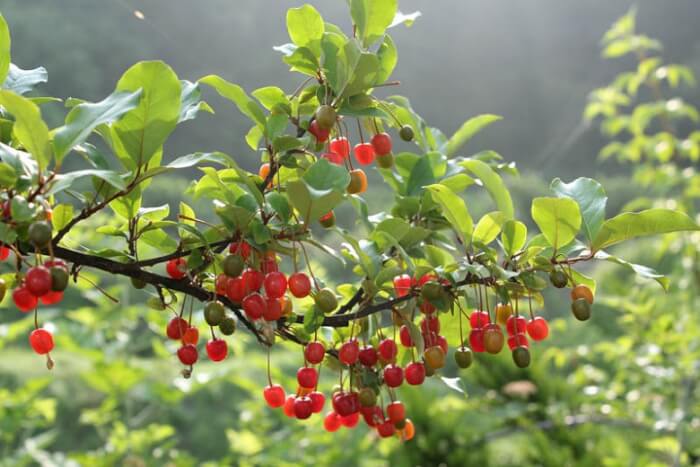
Autumn olive is a thorny shrub originally planted for erosion control and wildlife food. It has silver-green leaves and produces edible red berries, which many birds enjoy.
Unfortunately, those same fruits lead to massive seed dispersal, spreading the plant far from intended areas. It quickly forms dense thickets that dominate fields and forest edges.
These thickets prevent native plants from returning and alter soil nitrogen levels. If you grow it, be prepared for endless seedlings to pop up.
#5 Burning Bush
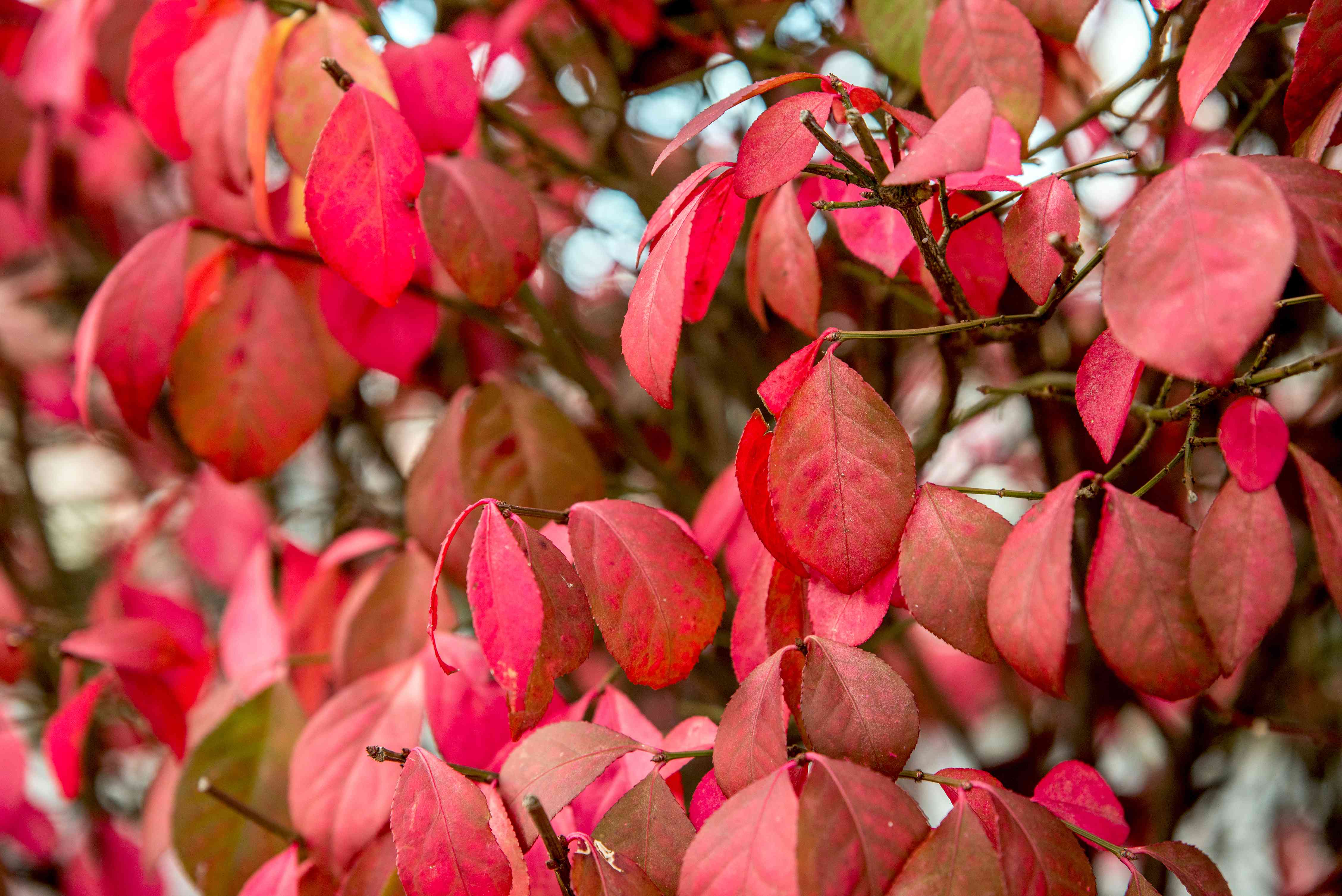
Burning bush is admired for its fiery scarlet foliage in autumn, which explains its popularity in landscapes. While beautiful, it spreads aggressively through seeds dispersed by birds.
Over time, it forms colonies that crowd out native understory plants. Its density reduces food and habitat diversity for local wildlife.
Once it escapes into natural areas, it is extremely difficult to control. Consider native alternatives like red chokeberry or viburnum for similar fall color.
#6 Border Privet
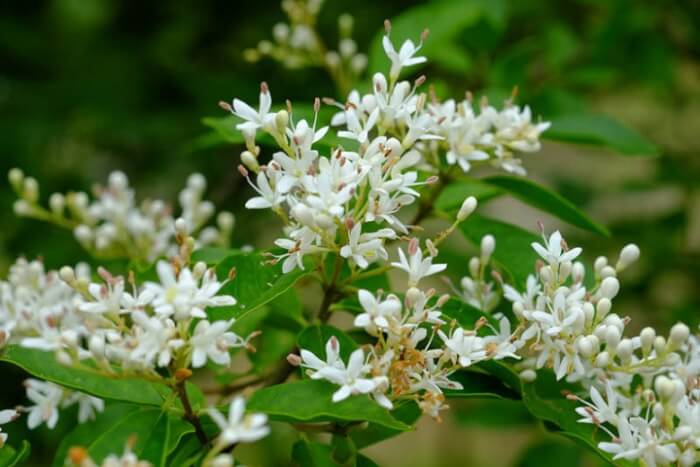
Border privet is often used for formal hedges because it grows quickly and tolerates heavy pruning. The problem is that it self-seeds prolifically, spreading into nearby forests and fields.
Left unchecked, it forms thick walls of greenery that block out light and crowd native species. Privet hedges also drop thousands of berries that birds carry into wild areas.
This makes them one of the most damaging invasive shrubs across many regions. If privacy is your goal, arborvitae or native hollies are safer alternatives.
#7 Chinese Wisteria
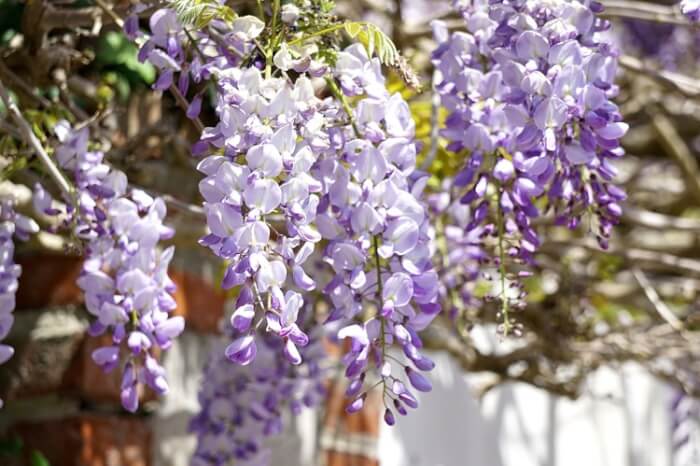 Chinese wisteria produces breathtaking purple flower clusters that drape elegantly over trellises and walls. Unfortunately, its thick vines become heavy enough to damage siding, roofs, and fences.
Chinese wisteria produces breathtaking purple flower clusters that drape elegantly over trellises and walls. Unfortunately, its thick vines become heavy enough to damage siding, roofs, and fences.
The roots spread aggressively and send up new shoots far from the original planting. Once mature, it is almost impossible to remove completely without repeated cutting and digging.
Native wisteria varieties are less invasive but still require careful pruning. Grow it only if you’re ready to commit to regular, rigorous maintenance.
#8 Golden Bamboo
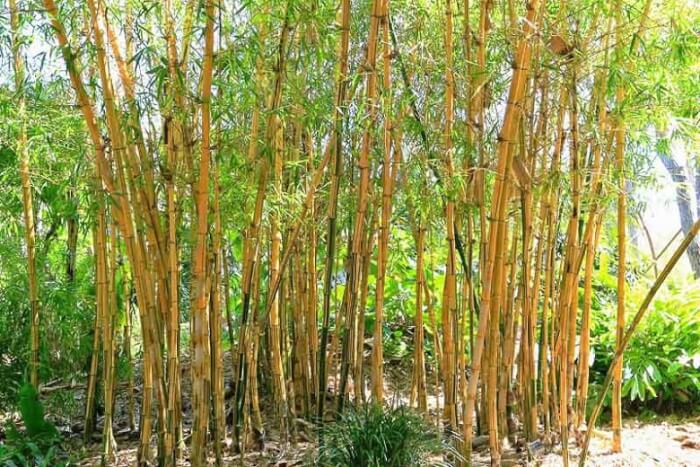
Golden bamboo grows into tall, dense screens within just a few seasons. Its evergreen foliage makes it tempting for privacy hedges. However, its underground rhizomes spread relentlessly, pushing through barriers, lawns, and even sidewalks.
Once established, bamboo is nearly impossible to remove without professional help. Entire yards have been taken over by unchecked clumps. If you love bamboo, choose clumping species instead of running types like golden bamboo.
#9 Butterfly Bush
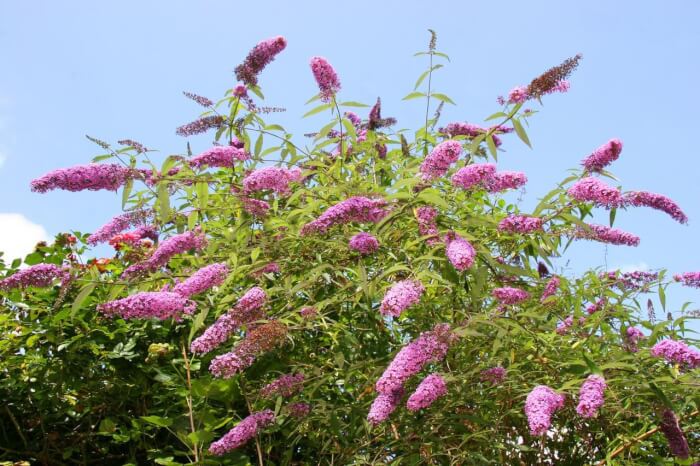
Butterfly bush is prized for its fragrant flowers that attract butterflies and hummingbirds. But while it offers nectar, it does not provide the larval food that butterflies need to reproduce.
Worse, it spreads by wind-blown seeds and quickly colonizes disturbed soils. Large stands can reduce habitat diversity for other beneficial plants.
Some regions now restrict its sale due to its invasive nature. Opt for native flowering shrubs like buttonbush or serviceberry to support pollinators more effectively.
#10 Maiden Silvergrass
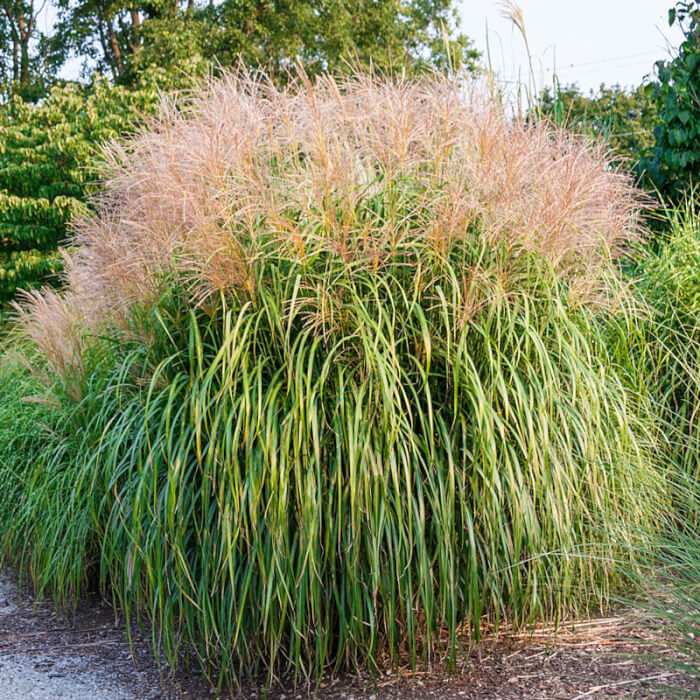
Maiden silvergrass, or miscanthus, is a popular ornamental grass for its tall plumes and movement in the breeze. Unfortunately, it self-seeds aggressively and invades natural prairies and wetlands.
Once established, it creates a fire hazard because of its dry, flammable foliage. It also shades out smaller native grasses and wildflowers.
Cutting back and removing seed heads is essential to limit its spread. Consider sterile cultivars or native switchgrass as alternatives.
#11 Winter Creeper
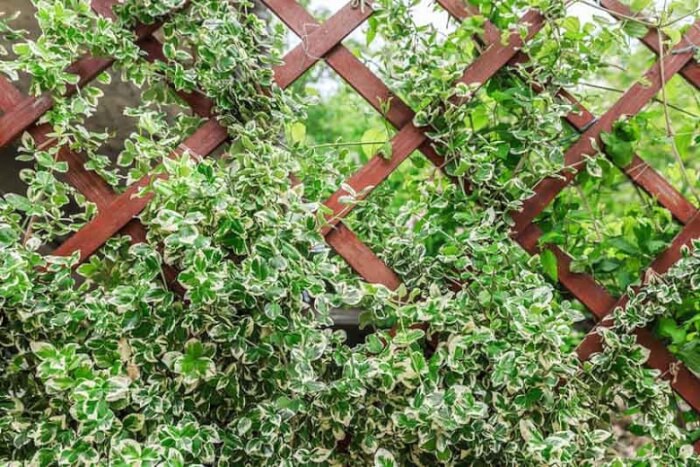
Winter creeper is valued for its glossy evergreen leaves and versatility as a vine, groundcover, or hedge. But its fast-spreading runners take over large areas, smothering native plants.
When it climbs, it can reach trees and weaken them by shading out their leaves. Its dense mats reduce habitat diversity for insects and small animals.
Pulling it out by hand is time-consuming, and chemical control is often necessary. Left unchecked, it becomes a monoculture.
#12 Norway Maple
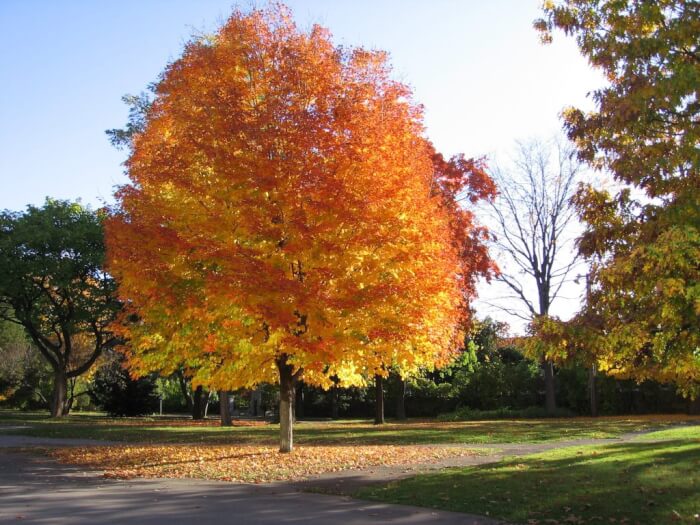
Norway maple is a shade tree that tolerates pollution, drought, and poor soils, which explains its popularity in cities. However, its shallow roots outcompete native trees and plants for moisture and nutrients.
Its dense canopy blocks most sunlight, preventing wildflowers and understory shrubs from surviving. This leads to forests dominated by maples with little diversity.
It also self-seeds prolifically, spreading into natural woodlands. Sugar maple or red maple are much friendlier alternatives for your yard.
